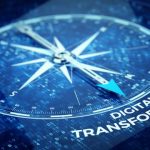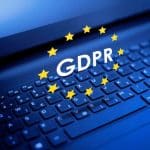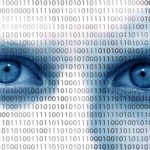Locate and recover lost data using EaseUS Data Recovery Free

Let's face it, most of us don’t lose data that often, but when you do, it takes time to scurry around and find a tool to attempt recovery. Time is important for finding deleted files. The more often your computer writes to the drive, the less likely you’ll be able to recover data.
Although it’s rare for a hard drive to fail or for an individual to 'accidentally' delete important data you need in the future, once it happens, you’ll want software to help you recover, swiftly.
SyncBack v9 released with an improved UI, new SFTP engine and much more

Backing up your data is hugely important. You could just rely on the cloud, but this means you need to remember to keep the files synchronized and you might not want to store your most important personal information there. Would you want your accounts and tax records in the cloud?
The solution is a backup tool where you can configure the data you want to back up, when you want to perform the backup, and the location. You can then simply leave the tool to action your request.
How AI is impacting security in 2019

In 2019, cyber threats are occurring at a rapid pace. In fact, cyber attacks are the fastest growing crime globally and are continuously increasing in sophistication, size, and impact. At the same time, the number of qualified cybersecurity professionals is dwindling. In a recent blog post, Ann Johnson, the head of Microsoft’s cybersecurity solutions group, used estimated data from the research firm Cybersecurity Ventures to project a shortage of about 3.5 million qualified cybersecurity workers by 2022.
Artificial intelligence (AI) can serve as a helpful tool in cybersecurity. AI can help businesses of all sizes and across many industries better prepare for impending security threats. Here are three of the most impactful benefits of AI in online security:
Digitally transform operations by optimizing legacy processes

Every company these days is on a path to digital transformation, using technology to rise above the competition and show customers it is modern, efficient and optimized for success.
But as companies work through this transformation, they often uncover processes that have fallen behind the times and seem impossible to fix -- either because these processes are tightly interwoven with other core business processes, or because it’s not clear where to even begin.
How businesses can incorporate blockchain into their everyday activities

The introduction of blockchain technology has made revolutionary changes to finance sectors across the world -- most commonly through the use of cryptocurrency. Now however the platform is increasingly finding new uses by businesses to help enhance and customize the services they are already offering. Those businesses that have already begun to incorporate blockchain into their day-to-day are creating new opportunities for both themselves and the end customer.
Most people will be familiar with blockchain for its use in cryptocurrency as a secure transaction system. By using a blockchain-based platform, businesses can process crypto payments locally or across borders payments as well as making micro-payments, and add expanded options for customers to suit a greater variety of needs. Blockchain also digitally records all processes, which can make supply chain and return/refund processes more streamlined, with payments and refunds being made automatically.
Understanding disaster recovery options for SQL Server

One of the challenges IT and database administrators confront when implementing disaster recovery provisions is choosing from among the myriad options available. Existing high availability configurations designed to minimize downtime for critical applications may not be adequate for recovering fully from a widespread disaster. And existing disaster recovery provisions may not be as comprehensive or cost-effective as they could be. This article provides practical guidance to help administrators optimize disaster recovery plans for SQL Server, beginning with the disaster recovery plan.
A good disaster recovery plan builds on the organization’s Business Continuity Plan. BCPs generally cover the entire organization, and in most organizations, IT is one of the most if not the most critical department. There are two aspects of the BCP that are fundamental to DR planning: the business impact analysis and the threat assessment. The former determines which applications are mission-critical and the latter identifies those disasters the organization is most likely to experience.
Do IoT devices really pose a security risk, or is it merely paranoia?

Market data firm Statista projects that by 2025, there will be 75 billion IoT devices in use. Smart devices are now found throughout most commercial offices, yet a lack of security could make them ticking time bombs. IoT devices often come with security shortcomings, and it can be difficult to detect when someone has exploited one of their vulnerabilities.
Why are IoT devices dangerous? It's not a single issue; rather, it's intrinsic to the way that the technology itself works.
How GRC solutions help companies meet GDPR requirements

In May of 2018, companies raced to the finish line to accomplish GDPR compliance. Given that it was the first year of GDPR, many industry experts expected to not see any companies fined. That is all going to change in the year ahead. In January 2019, Google was hit with the first major GDPR fine of $57 million, putting an end to the unspoken grace period. Companies should recognize this as a warning: get compliant or risk massive fines. This is especially important as only 59 percent of organizations report meeting all or most GDPR requirements, 29 percent expect to do so within a year, and nine percent will take more than a year.
With the stress of GDPR and potential increase in consumer privacy legislation looming on the horizon, CISOs need help. Rather than continuing to spin their wheels, CISOs should consider governance, risk and compliance (GRC) solutions that simplify GDPR compliance by streamlining operations to avoid fines and penalties altogether. Below I put together three ways that a GRC solution can help.
The changing landscape of cybersecurity

Bad actors have been seeking opportunities to take advantage of unsophisticated netizens or unprotected organizations since the dawn of the World Wide Web, but today’s bad actors are in a class by themselves. Nation-state actors, often operating through a vast network of well-funded proxies, strive to exert influence, threaten stability, and sow discord through the mechanisms of cyberspace. Hacktivist organizations seek to undermine, damage or discredit organizations whose agendas and politics they oppose.
They may not be as well funded as nation-state actors, but they are populated by technically sophisticated people who have bought into a cause -- and when these people work together, they can pose serious threats to those with whom they disagree.
Media server Serviio 2.0 adds multi-user streaming

When we think about streaming a movie, our first thought is Apple iTunes, Netflix or Amazon Prime. We rush to sign up to these services, pay our monthly fee, and then search through old movies to keep ourselves entertained on a rainy public holiday.
But what did you do with all those old DVDs you had (or have) lying around? One solution would be to set up your own network-based media server, rip your old discs and watch on demand. Better still, as DVDs are increasingly unpopular, even movies released a few months ago are available at seriously discounted prices, meaning you can pick up quality movies for a fraction of the original price.
The invisible programmer: A coder's domain is bigger than you might think

When you imagine the role of a coder there’s a good chance that what comes to mind are pop culture tropes; the eccentric loner, the rogue prodigy, or the cloistered IT guru who saves the company with a brilliant solution hatched from behind a stack of pizza boxes in some windowless basement office.
The reality is that coders represent a much more ubiquitous, everyday-problem-solving task force deployed throughout organizations and their skills are increasingly being utilized across many industries to address a variety of business challenges within their organizations.
Providing guardrails for developers to innovate while staying secure in the cloud

Enterprise cloud adoption has largely been driven by developers eager to take advantage of its agility. These developers are often moving very quickly and are under pressure to bring new products to market that provide competitive advantages. The speed of development combined with a lack of cloud security expertise often results in engineers and developers bypassing certain security and compliance policies. The result is a chaotic, "Wild, Wild West" cloud environment.
Alongside innovative apps and services, a common byproduct of this "free for all" mentality is data breaches, thanks to misconfigurations and other security glitches. This article shares advice on how organizations can empower their developers and engineers by providing a safe framework within which to operate, so they can stay agile and innovative, without inadvertently compromising security.
59% of adults experience stress in the workplace -- could business technology provide a means to help reduce this figure?

The combination of technology and mental health can often have negative connotations. There is plenty of media attention surrounding the negative impact the former can have on the latter. In fact, there is research identifying that social media and too much screen time can increase the risk of depression and anxiety, which can lead to hampered sleep and increased stress levels. A recipe for disaster?
Looking at the other side of the coin, technology can also work to improve mental health and stress levels. In recent years, technology has brought about hugely beneficial health apps like Headspace, Calm and Stop, Breathe & Think. This has provided people with a way to help manage their own mental health conditions on a daily basis, such as anxiety and depression. Businesses can also employ different technologies to help address workplace stress. Together, let’s take a deeper look at that below…
New privacy regulations mean your company needs better data management now

Do you know how every company you interact with uses your private data? Consider this: In December 2018, The New York Times revealed that tech and marketing companies use seemingly innocuous apps to gain access to users’ locations -- sometimes up to 14,000 times each day.
For example, the Weather Channel app funneled users’ location data to an IBM subsidiary, while Reveal Mobile, a location-based marketing firm, harvested users’ location data from code planted in more than 500 other apps. It’s safe to say that most people trusted the Weather Channel app to make daily decisions about what to wear or whether to take an umbrella. After the news broke, however, the Weather Channel’s status as a trusted institution was less certain.
How the smartest companies use Slack today

When Slack first arrived on the scene in 2013, it was meant to be an amped-up social messaging app that would improve workplace communication and cut down on email. It’s still serving that purpose, but these days it’s also a tool for interacting with customers, simplifying project management workflow, and integrating just about every app known to man in one place.
Slack now has 10 million users and those getting the most out of the app are those turning Slack into major command centers. Slack is the hub through which all their notifications, calendar reminders, project updates, and files flow.
BetaNews, your source for breaking tech news, reviews, and in-depth reporting since 1998.
© 1998-2025 BetaNews, Inc. All Rights Reserved. About Us - Privacy Policy - Cookie Policy - Sitemap.
